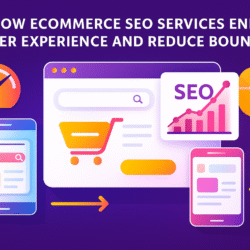Let’s be honest. For most of us, interacting with government feels like stepping into a time machine set to 1995. It’s a world of convoluted forms, endless phone trees, and websites that look like they were coded by someone who still uses a dial-up modem. We’ve accepted this as the price of citizenship, a necessary friction for accessing everything from a business license to a building permit.
But it doesn’t have to be this way.
The problem isn’t a lack of will or even a lack of funding. The problem is often a fundamental disconnect between the intention of a service and the experience of using it. This is where the magic happens when we stop thinking about “IT projects” and start thinking about human-centered public sector technology solutions.
I want to tell you a story about what that shift looks like. It’s not about flashy gadgets or forcing AI where it doesn’t belong. It’s about listening.
The Permit That Broke the Camel’s Back
Imagine Maria, a small business owner who bakes the most incredible artisan bread. Her dream is to open a tiny storefront in her neighborhood. To do that, she needs a simple permit for a commercial sign. She goes to the city’s website, a labyrinth of PDFs and vaguely worded instructions. She downloads Form 87-B, only to find it requires a stamp from the zoning department, which is in a different building across town. After a morning in line, she’s told she’s missing a site plan drawn to a specific scale.
Frustrated, she gives up for a week. Her dream is put on hold, not by regulation, but by friction.
Now, let’s rewind. What if, instead of building a system around internal departmental silos, the city had started with Maria?
What if they had hired a government app development specialist who didn’t just code, but who understood the citizen’s journey?
This specialist wouldn’t just ask, “What are the requirements for a sign permit?” They would ask:
-
“Who is applying for this permit, and what are they trying to achieve?”
-
“What information do they have readily at hand?”
-
“What are their biggest fears and frustrations in this process?”
-
“How can we make this not just possible, but simple?”
The Human-Centered Blueprint: More Than Just an App
A true government app development specialist is part detective, part therapist, and part architect. Their process looks nothing like the old way of doing things.
Phase 1: The Empathy Expedition
Before a single line of code is written, they hit the streets. They sit with people like Maria. They shadow the clerks at the permit counter, listening to the same questions asked a hundred times a day. They discover that the problem isn’t the form; it’s the anxiety of not knowing what you need until you’ve already done it wrong.
Phase 2: The “Why” Behind the “What”
They work with department heads, not as clients giving orders, but as partners solving a puzzle. Why does zoning need a site plan? To ensure public safety and compliance. Okay, can we build a tool that helps a citizen create a compliant site plan using a simple map interface on their phone? The goal remains the same compliance but the path becomes collaborative, not adversarial.
Phase 3: Building the Digital Bridge
This is where the public sector technology solutions come to life. Instead of a sprawling, monolithic website, they might build a single, hyper-focused micro-app: “Apply for Your Sign Permit.”
This app would:
-
Use plain language. No legalese, no codes. Just “What’s your address?” and “What type of sign are you installing?”
-
Be smart and predictive. Using the address, it could pre-populate zoning information and automatically list the requirements.
-
Integrate guidance. A simple tool lets Maria sketch her sign on a photo of her building, and the app confirms it meets size regulations.
-
Offer a clear, transparent timeline. “Your application is complete. You can expect approval in 5-7 business days. We will notify you at every step.”
Suddenly, a process that was a source of dread becomes a straightforward, even pleasant, digital interaction. Maria feels heard and empowered. The city clerk spends less time answering basic questions and more time on complex cases. Everyone wins.
The Ripple Effect of Getting It Right
When we invest in thoughtful public sector technology solutions, the benefits cascade far beyond a single satisfied citizen.
-
Trust is Built: Every smooth, transparent interaction is a brick in the foundation of public trust. It signals that the government is competent and cares about your time.
-
Equity is Enhanced: Not everyone has the time, transportation, or flexibility to take a Tuesday off to wait in a government office. A well-designed digital service is available 24/7, democratizing access for parents, shift workers, and those with mobility challenges.
-
Resources are Freed Up: City staff are some of our most valuable public assets. Freeing them from repetitive, mundane tasks allows them to focus on the complex, human-centric work that truly requires their expertise.
-
Innovation Becomes the Norm: A successful project becomes a proof of concept. The parks department sees what happened with permits and starts thinking about an app for reserving picnic areas. The library imagines new ways to connect with patrons. A culture of innovation begins to replace a culture of compliance.
A Call for a New Conversation
The next time your city or state talks about a “digital transformation,” listen closely. Are they talking about buying faster servers and scanning old paper forms? Or are they talking about the Marias in your community?
The future of government isn’t about replacing humans with robots. It’s about using technology to amplify our humanity. It’s about building bridges of understanding between the immense capability of the public sector and the real, daily needs of the people it serves.
It requires a new kind of partnership, one where visionary public leaders join forces with those rare government app development specialist teams who see the citizen not as a case number, but as a person with a dream, a problem, and a right to a simple solution.



